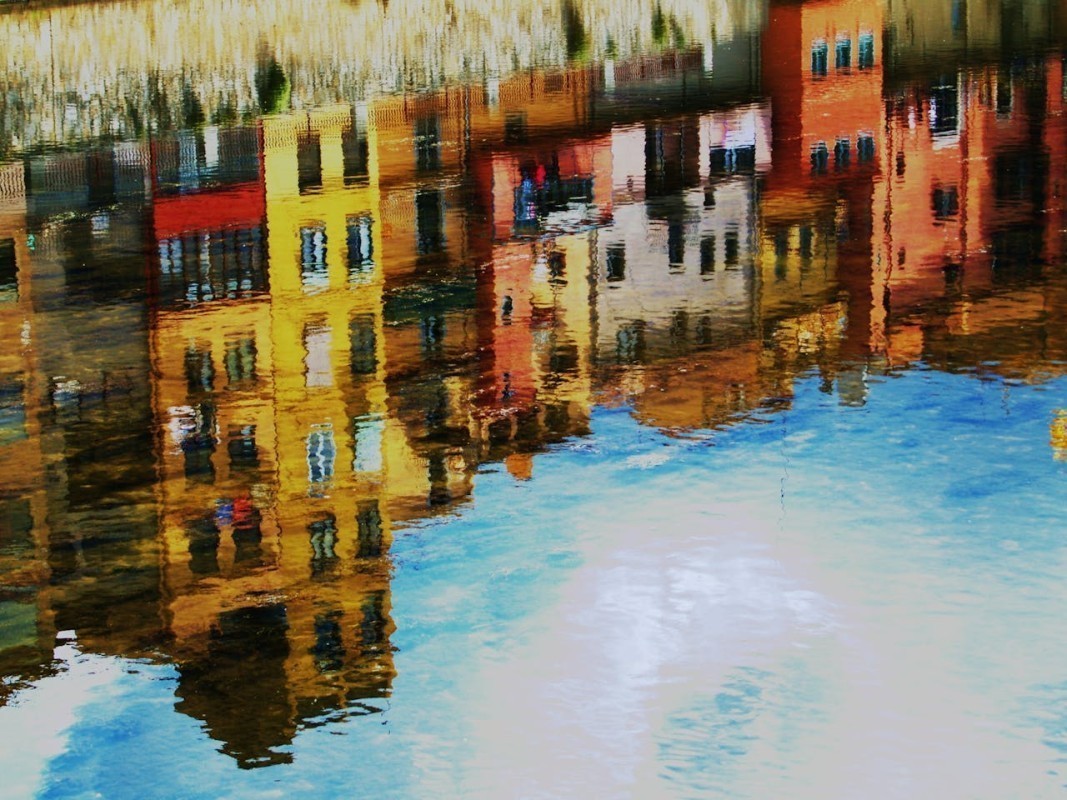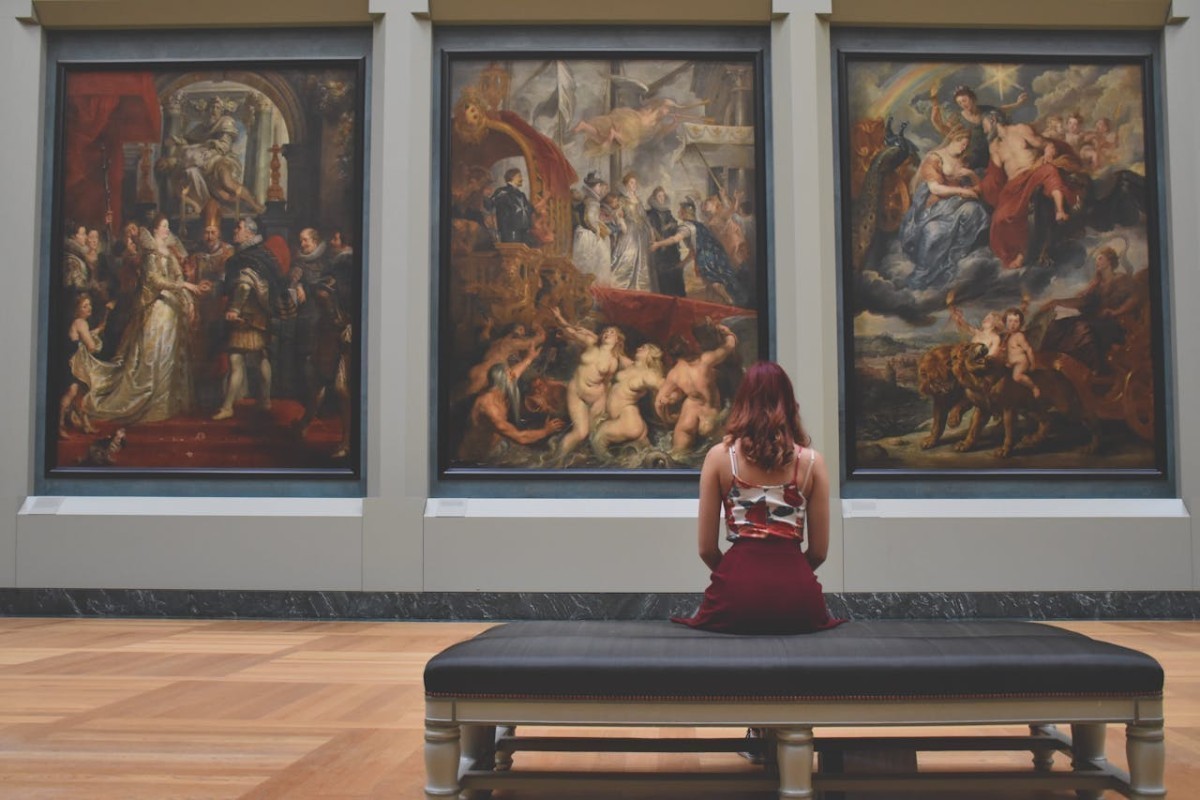Art as Expression: Interpreting and Analyzing Visual Language
Art is much more than just a collection of aesthetically pleasing images; it's a profound form of communication and self-expression. From the brushstrokes of a Renaissance masterpiece to the abstract forms of contemporary art, each piece tells a story and conveys emotions, ideas, and perspectives unique to its creator. Interpreting and analyzing art requires a nuanced understanding of visual language, cultural context, and artistic intent. This guide explores the fundamentals of art as expression and provides tools for deeper analysis and appreciation.



Understanding Visual Language
Elements of Art
-
Line: The path created by a moving point. Lines can be straight, curved, thick, thin, or dashed and are fundamental in defining shapes, textures, and movements.
-
Shape: Two-dimensional areas defined by lines or color. Shapes can be geometric (like squares and circles) or organic (freeform, irregular shapes).
-
Color: Comprises hue (the color itself), value (the lightness or darkness of the color), and intensity (the brightness or dullness of the color). Colors evoke emotions and set the mood of the artwork.
-
Texture: The perceived surface quality of an artwork. It can be actual (tactile) or implied (visual), adding depth and richness to the piece.
-
Form: Three-dimensional shapes that have volume and occupy space. Forms can be geometric (like cubes and spheres) or organic (natural, irregular shapes).
-
Space: The area around, between, or within objects. Space can be used to create a sense of depth, distance, or perspective.
-
Value: The lightness or darkness of a color. It helps create contrast and emphasis, influencing the mood and depth of the artwork.
Principles of Art
-
Balance: The distribution of visual weight in a composition. It can be symmetrical (evenly distributed) or asymmetrical (unevenly distributed but still balanced).
-
Contrast: The juxtaposition of differing elements, such as light and dark colors, to highlight differences and create visual interest.
-
Emphasis: The focal point of an artwork, drawing attention to a particular area or subject. This can be achieved through contrast, placement, or color.
-
Movement: The path the viewer’s eye follows through the artwork. Artists use movement to guide attention and create a sense of flow.
-
Pattern: The repetition of elements like lines, shapes, or colors. Patterns can create rhythm and unity within an artwork.
-
Rhythm: The visual tempo or beat created by repeating elements. It contributes to the sense of movement and flow in the artwork.
-
Unity: The sense of cohesion and harmony in an artwork, achieved when all elements work together to create a complete and coherent piece.
Contextual Analysis
Historical Context
-
Era and Style: Understanding the time period in which an artwork was created helps in interpreting its style and significance. For instance, Renaissance art reflects the values and techniques of the 14th to 17th centuries, while Abstract Expressionism emerged in the mid-20th century.
-
Artist’s Background: An artist’s life, experiences, and socio-political environment can profoundly influence their work. Researching their biography can provide insights into the themes and motifs present in their art.
Cultural Context
-
Symbolism and Iconography: Different cultures have unique symbols and visual languages. Recognizing these symbols can aid in interpreting the deeper meanings behind the artwork. For example, lotus flowers in Eastern art often symbolize purity and enlightenment.
-
Social and Political Influences: Art often reflects societal values, struggles, and events. Analyzing the artwork in the context of its social or political climate can reveal underlying messages or critiques.
Interpreting Artistic Intent
The Artist’s Message
-
Emotional Expression: Art is a medium for expressing emotions. Consider how the use of color, form, and texture conveys feelings such as joy, sadness, or anxiety.
-
Narrative and Themes: Many artworks tell a story or explore specific themes. Identifying the narrative or thematic elements can help unravel the artist’s intended message or commentary.
Viewer’s Perspective
-
Subjectivity in Interpretation: Each viewer brings their own experiences and perspectives to an artwork. Your interpretation may differ from others, and multiple readings of the same piece can coexist.
-
Personal Response: Reflect on how the artwork makes you feel and why. Your emotional response can provide valuable insights into the artist’s intent and the artwork’s impact.
Analyzing Art Techniques
Medium and Materials
-
Materials Used: The choice of medium (oil paint, watercolor, sculpture materials, etc.) affects the texture, color, and overall appearance of the artwork. Understanding these choices can enhance your appreciation of the technical aspects of the piece.
-
Techniques and Methods: Techniques such as brushstroke style, layering, or carving methods contribute to the artwork’s texture and form. Analyzing these methods can reveal the artist’s skill and intention.
Composition and Layout
-
Arrangement of Elements: Analyze how the artist arranges visual elements within the space. Consider the placement of focal points, the use of negative space, and the overall balance of the composition.
-
Perspective and Depth: Examine how the artist creates a sense of depth and perspective. Techniques like linear perspective or atmospheric perspective can significantly impact the viewer’s perception of space.
Practical Tips for Art Appreciation
Observation and Reflection
-
Spend Time with the Art: Take your time to observe the artwork closely. Notice details, colors, and textures that might not be immediately apparent.
-
Reflect on Your Thoughts: Consider what the artwork means to you personally. Your reflections can provide unique insights and deepen your appreciation.
Engage in Discussion
-
Art Discussions: Engaging in discussions with others about the artwork can offer new perspectives and interpretations. Sharing ideas and opinions can enrich your understanding and appreciation of the piece.
-
Art Critiques: Reading critiques and analyses by art historians or critics can provide additional context and enhance your interpretive skills.



Art as expression is a powerful and multifaceted aspect of human culture. By understanding the visual language of art, analyzing its contextual and technical elements, and interpreting the artist’s intent, you can gain a deeper appreciation of the profound messages conveyed through artistic creations. Whether you’re a seasoned art enthusiast or a casual viewer, these insights will help you engage with art in a meaningful and enriching way, revealing the layers of emotion, thought, and creativity that make art an enduring form of human expression.












